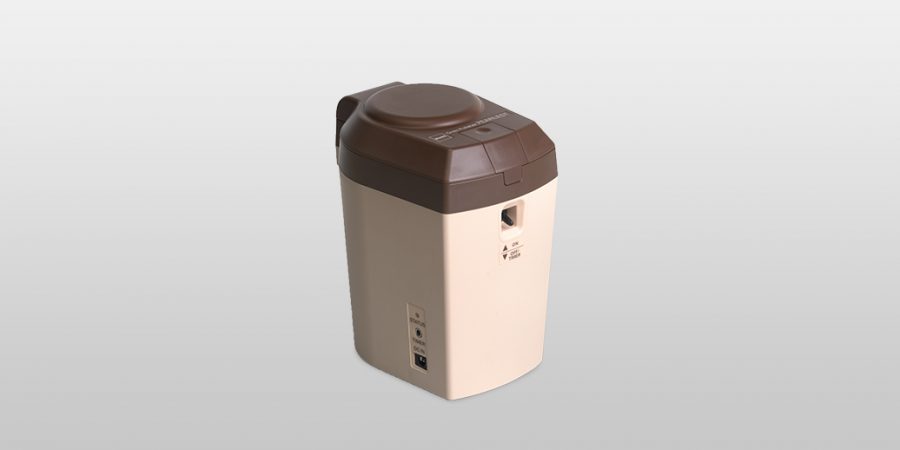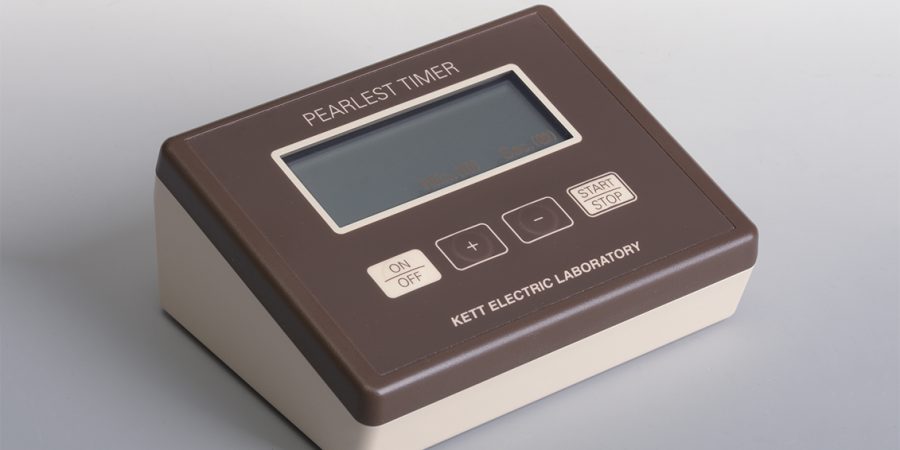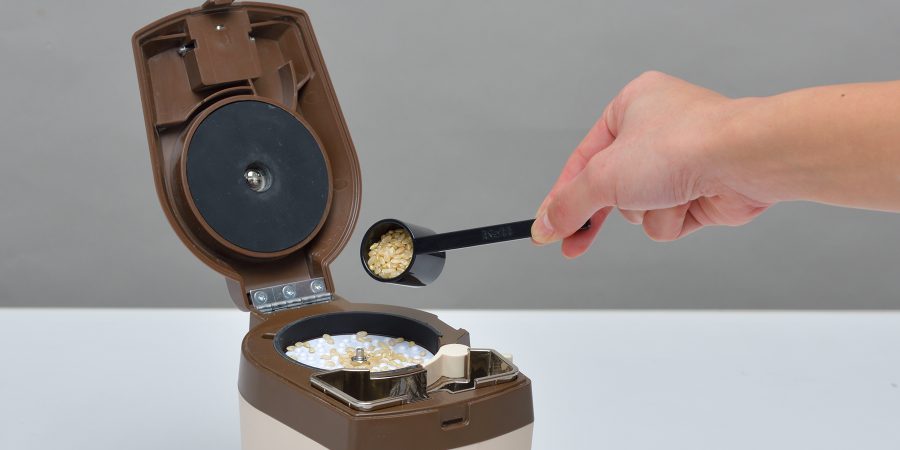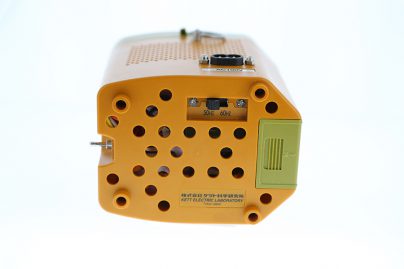Compact Rice Mill, “Pearlest” Part2
- Behind the scene

Electrical difference
ES: The first Pearlest had an AC 50/60 Hz changeover switch, didn’t it? Home electrical appliances had a changeover switch because they have a different specification (electrical frequency) between the east side and west side of Fuji River in Shizuoka Prefecture and Itoigawa City in Niigata Prefecture a little while ago. Such a thing is nostalgic, isn’t it? The new Pearlest does not have the changeover switch. Is the internal significant change the electrical part?
K: That’s right. The first Pearlest had an AC motor in the drive unit for polishing. That mechanism needed an AC changeover switch, which was not directly connected to users’ awareness, but when the model was exported, the motor had to be replaced with a motor according to the voltage used in the destination country. For the new model, such things can be omitted.
Motor change
ES: Elimination of the frequency changeover switch was advanced concurrently with use of universal voltage. Is this correct?
K: Such things were not main purposes. We reviewed the motor that was the heart of the machine, and changed from a conventional AC motor into a DC motor. The motor change consequently could eliminate changeovers of frequency and voltage. Our main purpose was to achieve driving the rice mill for a long period of time.
ES: Couldn’t the first Pearlest be driven for a long time?
K: Pearlest is not used for long time polishing in succession in the first place, but if it is intermittently used for a long time, it will be heated, which may cause the internal safety device to be activated and stop machine operation depending on the operation environment. You needed to wait until the machine is cooled down.
ES: In general, a DC motor has a less heat-generating and more energy-saving image.
K: Thanks to technical progress, a high-efficiency and long-life DC motor is created and we use it. Nevertheless, we conduct experiments in which the motor does not actually generate heat. The motor was operated for a long period of time with a cushioning material winding around the motor to preserve heat inside, and then the temperature was measured. The result passed the in-house safety standards in surplus.
The power consumption decreased from 40 watts to 26 watts partly because the drive is controlled by a microprocessor this time, and this model can be said to be an energy-saving machine just as imagined.
(To “Pearlest” Part 3)
Related product
Related article

- Behind the scene
- Compact Rice Mill, “Pearlest” Part 6: Actual machine review 2

- Behind the scene
- Compact Rice Mill, “Pearlest” Part 5: Actual machine review 1

- Behind the scene
- Compact Rice Mill, “Pearlest” Part4


